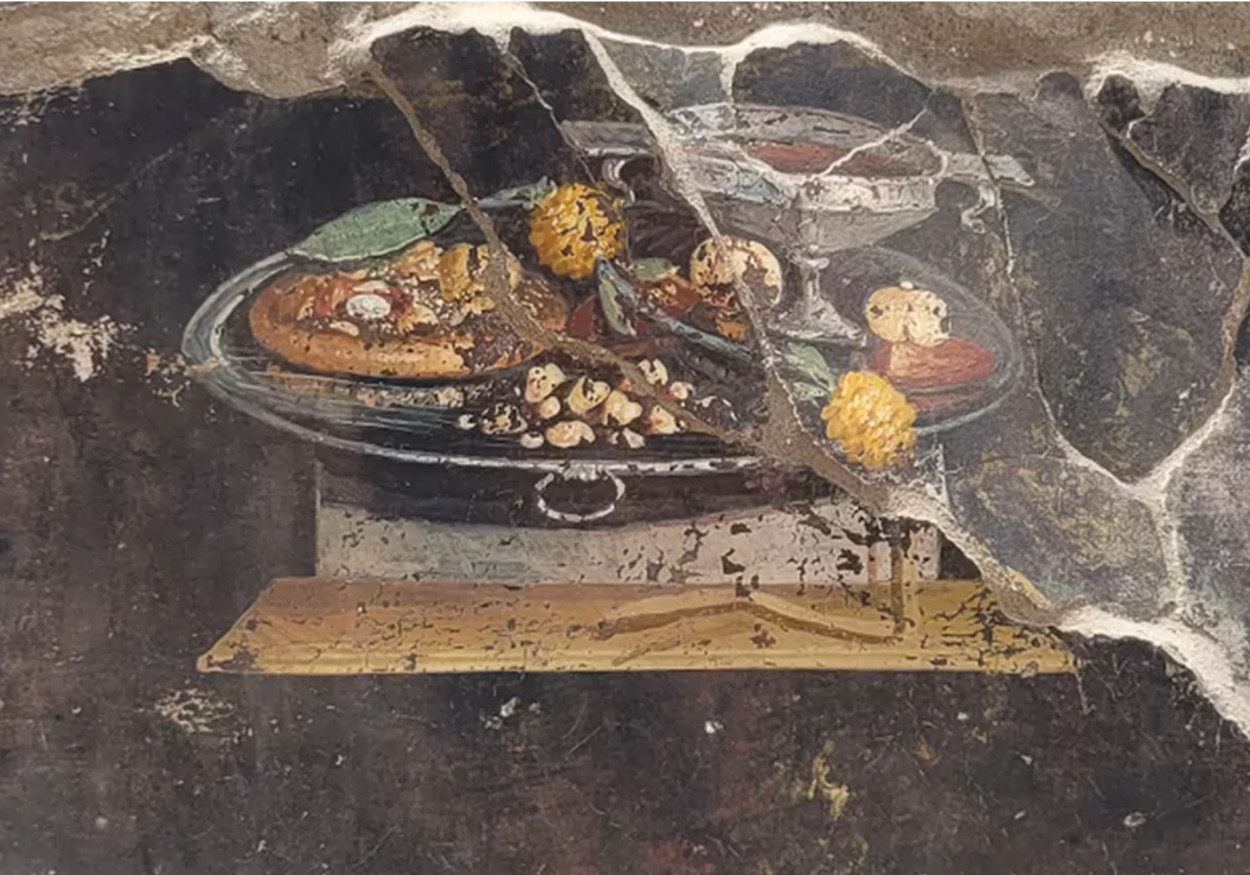Unearthing the Origins of Pizza: A Fascinating Discovery in Pompeii

The newly-uncovered fresco was found on a half-crumbled wall in what was the hallway of a house in Pompeii. Photo courtesy of the Italian Culture Ministry.
Pizza, the beloved Italian dish enjoyed worldwide, has a rich history that dates back centuries. Recently, archaeologists made an intriguing discovery in Pompeii, the ancient Roman city, that has shed new light on the potential origins of this iconic culinary delight. Unearthed during excavations, a 2,000-year-old fresco depicting a flatbread has provided valuable insights into the evolution of pizza. Although it lacks the precise ingredients of a modern pizza, this ancient flatbread offers a captivating glimpse into the culinary practices of ancient Rome. Let’s delve into the details and unravel the story behind this fascinating find.
The Unearthing of the Ancient Fresco
Located within the hall of a house adjacent to a bakery, the fresco was discovered during recent digs at Pompeii’s Regio IX, one of the nine districts comprising the ancient site. These excavations, which resumed nearly two millennia after the city’s tragic entombment due to the volcanic eruption of Mount Vesuvius in AD 79, have yielded a remarkable treasure trove of historical artifacts. The rediscovery of Pompeii continues to captivate archaeologists and visitors alike, offering a remarkable window into the past.
The Ancient Flatbread and Its Culinary Significance
While the flatbread depicted in the ancient fresco lacks the precise combination of ingredients that characterize a pizza today, it holds the potential to be a distant predecessor to the modern version. According to Italy’s culture ministry, archaeologists speculate that this flatbread might have been enjoyed with pomegranates or dates, possibly adorned with spices and a type of pesto sauce. The juxtaposition depicted in the fresco, highlighting the contrast between a “frugal and simple meal” and the “luxury of silver trays,” evokes the evolution of pizza from a humble dish in southern Italy to its current status as an internationally adored delicacy.
Archaeological Insights and Tragic Reminders
In addition to the fresco, recent excavation near the oven in the working areas of the house uncovered the skeletons of three individuals. This poignant discovery serves as a reminder of the devastating fate that befell Pompeii and its inhabitants when Mount Vesuvius erupted, preserving the city in time. Since its rediscovery in the 16th Century, Pompeii has been a rich source of knowledge for archaeologists, providing glimpses into ancient Roman life and culture.
FAQs about the Origins of Pizza
1. Could this ancient flatbread be considered the first pizza?
While the ancient flatbread discovered in Pompeii shares some similarities with modern pizza, it lacks the exact ingredients and characteristics that define a pizza today. However, it provides valuable insights into the early culinary evolution of this iconic dish.
2. How did pizza evolve from ancient flatbread to its present form?
Pizza has undergone a fascinating journey of culinary evolution. From its humble origins in ancient Rome, where it was enjoyed as a flatbread with various toppings, it gradually transformed over the centuries. In Naples, Italy, the addition of tomatoes in the 18th century led to the creation of the classic Neapolitan pizza, which served as the foundation for the pizzas we know and love today.
3. What makes pizza such a popular and enduring dish?
Pizza’s popularity can be attributed to its delicious taste, versatility, and ability to bring people together. Its wide range of flavors and toppings allows for endless customization, catering to various dietary preferences. Additionally, pizza’s universal appeal has made it a comfort food enjoyed across cultures and continents.
Story Credit: BBC News

